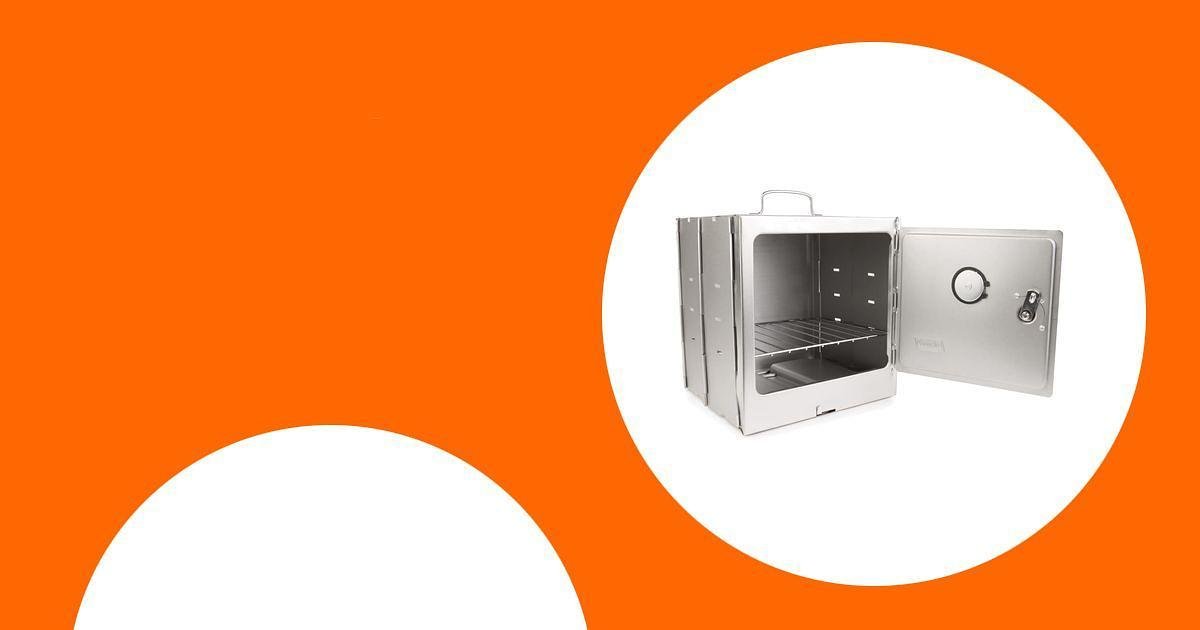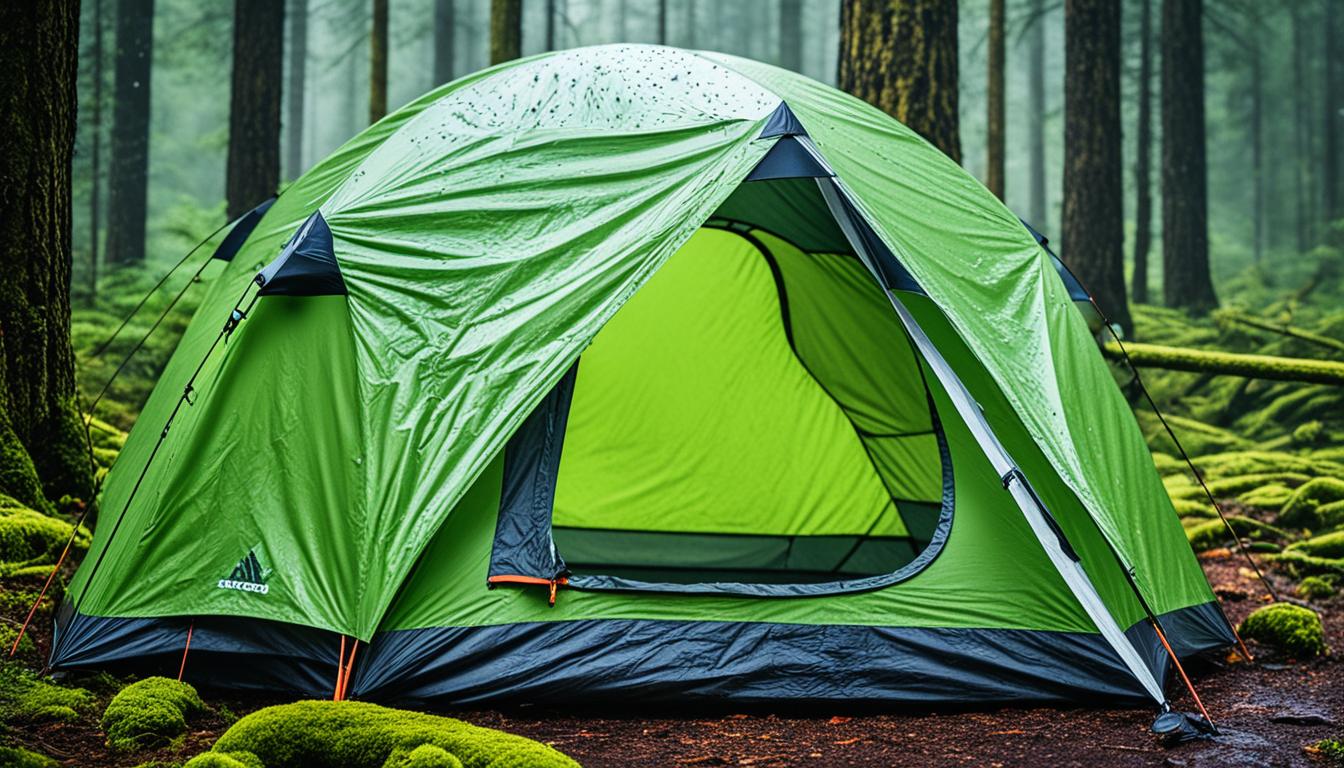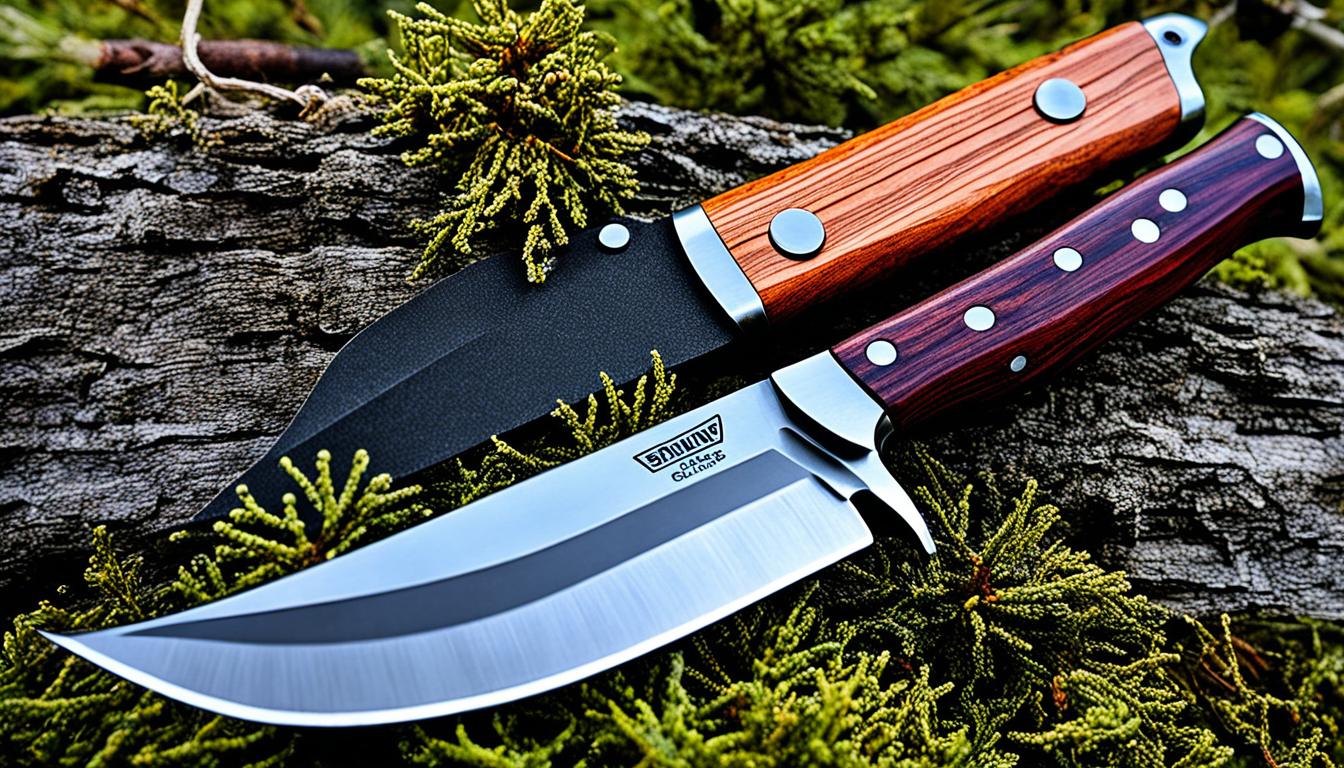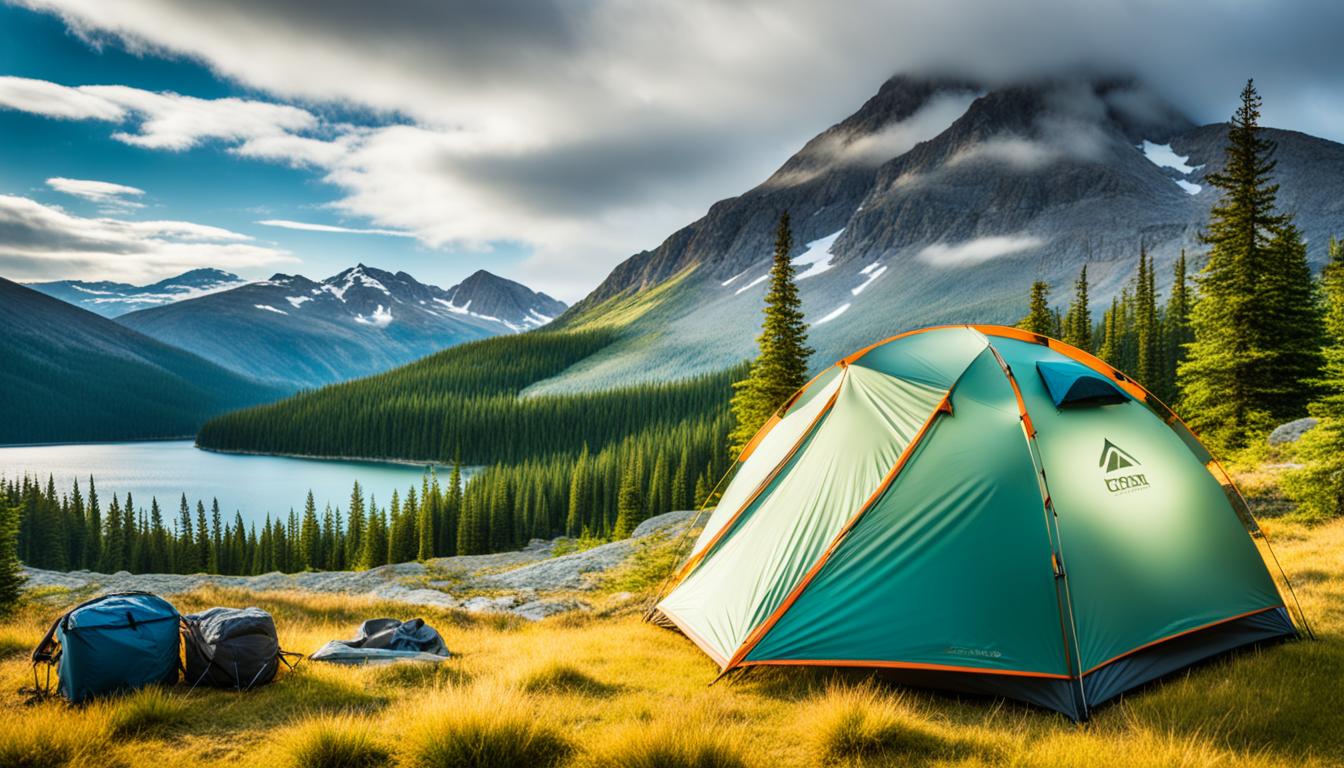
As someone who loves the outdoors, picking the perfect camping tent is crucial. It really makes a difference in how much you enjoy your trip. In this detailed guide, I’ll tell you how to choose the best tent for your adventures.
First, you need to know what you’ll use the tent for. Then, we’ll look at materials and designs. This guide will help you make a smart choice. You’ll soon find the camping tent that’s perfect for you.
Understanding Your Camping Needs
Before picking a camping tent, figure out what you need. Think about the type of camping, the weather, and group size.
Camping Type and Conditions
Your camping plans affect your tent choice. Backpacking needs a light tent. But car camping means you can choose a bigger, comfy tent. Weather like hot or rainy decides what tent protection and ventilation you need.
Group Size and Sleeping Capacity
Know how many people will sleep in the tent. Tents range from fitting two to six or more. Look for tents weighing less than 2 pounds per person for serious backpacking.
| Camping Needs | Recommended Tent Size |
|---|---|
| Solo Backpacking | 1-Person Tent |
| Couple Backpacking | 2-Person Tent |
| Small Group Camping | 3-4 Person Tent |
| Family Camping | 4-6 Person Tent |
Know what you need for camping to pick the best tent. Consider space, comfort, and protection. The tent size should fit your group, also considering the tent’s weight and how easy it is to live in.
Tent Materials and Construction
Choosing a camping tent involves looking at materials and how it’s made. This helps know if it’s strong, keeps water out, and works well. By knowing about the fabric’s thickness and how waterproof it is, you can pick a tent that’s ready for outdoor trips.
Fabric Denier and Waterproofing
How thick the tent material is, known as the fabric denier, matters a lot. Tents with a high denier number (like 40D or more) don’t tear easily and are great for rough outdoor use. But, remember, thicker fabrics can make the tent heavier to carry around.
Making a tent waterproof is just as crucial. Tents get a special coat of water-repellent material, like polyurethane or silicone, to keep you dry. The strength of this waterproofing is judged by its hydrostatic head rating. A high rating, say 1,000mm or more, means the tent is better at keeping rain out, even in strong storms.
| Fabric Denier | Waterproofing (Hydrostatic Head) | Durability | Weather Resistance |
|---|---|---|---|
| 20D – 30D | 1,000mm – 3,000mm | Lightweight and compact, but less durable | Good for mild weather conditions |
| 40D – 70D | 3,000mm – 5,000mm | More durable and tear-resistant | Suitable for moderate weather conditions |
| 75D – 100D | 5,000mm – 10,000mm | Highly durable and puncture-resistant | Excellent for harsh weather conditions |
Understanding the bond between fabric thickness, waterproofing, and how the tent is made is key. It guides you in picking a tent with the right mix of strength, water protection, and being easy to carry. This ensures your camping experience is enjoyable and safe.
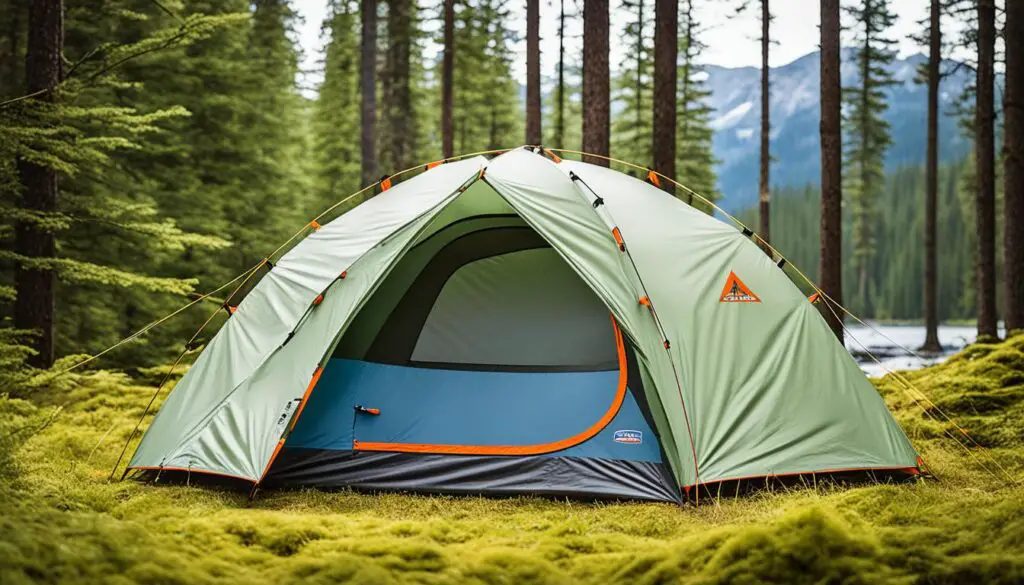
Tent Designs and Shapes
Camping tents come in many designs and shapes. Each one has its own benefits. Knowing these can help you pick the best tent for your camping.
The dome tent is a classic design. It’s very stable and can handle wind and rain well. Backpackers and solo campers often choose dome tents. They’re small and light.
Cabin tents offer lots of space. They stand tall, giving you room to walk around and store your things. They are perfect for family camping or trips with friends.
Tunnel tents are shaped like tunnels. This shape is great for windy areas. They are roomy inside, making them a good choice for long stays or trips in harsh weather.
Backpacking tents are for those who want something light and small. They’re easy to carry and set up. These are best for one or two people who like to move around.
When you pick a tent, think about how you camp, how many people, and the weather. Knowing the different types helps you choose well. This leads to a great camping trip.
How to Choose the Right Camping Tent
I’ll show you how to pick the best tent features and find the right size and weight. It’s all about making an informed choice. You can get a tent that fits your needs, whether you want something light to carry or a big, cozy place to sleep.
Evaluating Tent Features
When you choose a tent, think about its features for a better camping trip. Durable tents, made with strong fabric and aluminum poles, last longer. They also have features like fine mesh for air, a special floor for protection, and ropes to steady against the wind. These things make your tent work well no matter the weather.
Balancing Weight and Livability
The balance between how heavy a tent is and how comfortable it is matters a lot. Tents for backpacking are light, usually about 2 pounds for each person. Camping tents for more than one night can be heavier, from 4 to 6 pounds. Very big family or basecamp tents can be much heavier, up to 20 pounds.
When you look at tents, check how much they weigh and their size. Think about how you’ll use it, whether just for a day or a long trip. Make sure it has enough room for you and your stuff. Yet, it’s light enough to carry without problems.
By looking closely at tent features and finding a good balance, you’ll pick a great tent. Also, check out places like Camping World and Gear X. They have helpful tips to pick the best tent for your camping fun.
FAQ
What are the key factors to consider when choosing a camping tent?
Think about your camping needs and who you’re going with. Look at the materials and how the tent is made. Also, consider the shape and design. This will help you get the best tent for you.
How do I determine the appropriate size and sleeping capacity for my camping tent?
Decide based on how many people you have and how much space you need. Make sure the tent fits your group comfortably and has room to live in.
What are the differences between various tent materials and how do they impact the tent’s performance?
Tent materials, like fabric type and waterproofing, affect the tent’s strength and how it handles weather. Knowing these differences helps you pick a durable tent that keeps you safe outdoors.
How do I choose between different tent designs and shapes?
There are many tent shapes and designs, all good for different reasons. Think about your camping plans, the weather you’ll face, and what you like. These things will guide you to the best choice.
What should I consider when evaluating the features and balancing the weight and livability of a camping tent?
Consider the tent’s weight, how easy it is to carry, and the space it offers. Finding a balance ensures your tent is comfortable and easy to take with you, no matter your camping style.
- Discover the 4 Must-Have Camping Tent Accessories for Spring 2025 - March 19, 2025
- Why Camping Is Bad - November 29, 2024
- Best Camping Knife - November 29, 2024



